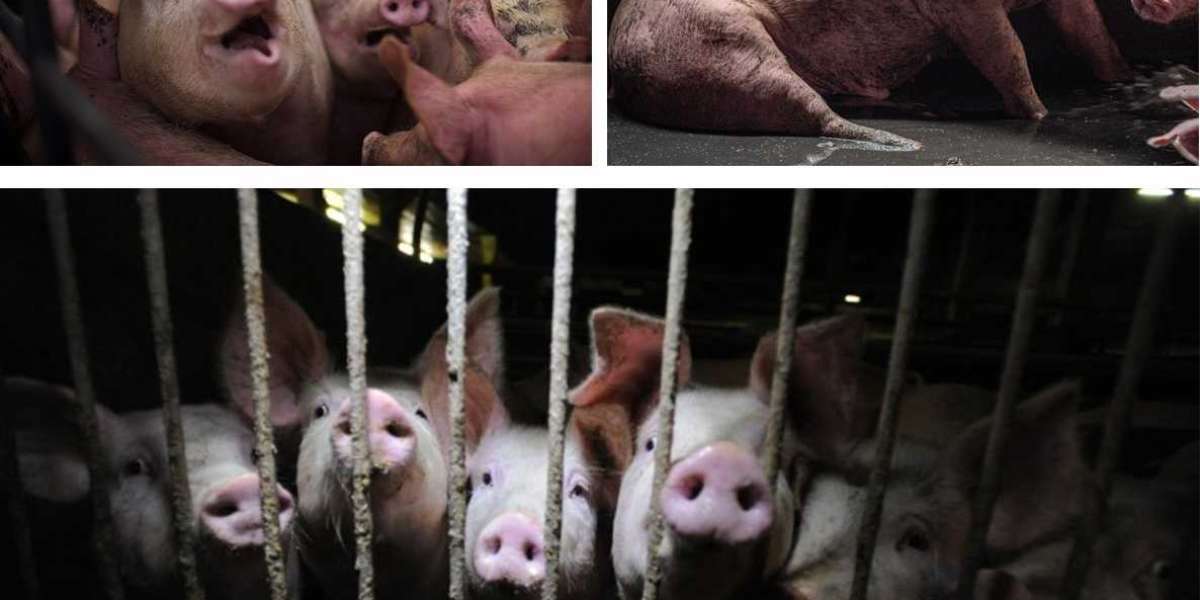Introduction
Gestation crates, also known as sow stalls, are small metal enclosures used in industrial pig farming. These crates confine pregnant sows for a substantial part of their gestation period, restricting their movement to the point where they cannot turn around. This practice, while efficient for managing large numbers of pigs, has been the subject of significant ethical and welfare concerns. This article delves into the reasons behind the use of gestation crates, the associated welfare issues, and the growing movement towards more humane alternatives.
The Purpose and Prevalence of Gestation Crates
Gestation crate abuse were developed to facilitate the management of pregnant sows and to maximize the efficiency of pig production. Each crate typically measures about 2 feet by 7 feet, just enough to accommodate the sow’s body. The rationale behind these crates includes:
- Preventing Aggression: Sows are known to exhibit aggressive behaviors, especially when housed together. The crates prevent fighting and injuries that might occur in group settings.
- Individual Feeding: Crates allow for individualized feeding, ensuring that each sow receives the appropriate nutrition without competition.
- Health Monitoring: Close confinement makes it easier for farm workers to monitor the health and welfare of each sow, including early detection of illness or distress.
Despite these justifications, the ethical implications of such extreme confinement cannot be ignored. Gestation crate abuse have been widely adopted in countries with intensive pig farming industries, including the United States, where an estimated 60-70% of sows are kept in these conditions.
Welfare Issues Associated with Gestation Crates
The primary welfare concerns related to gestation crates arise from the severe restriction of movement and the inability to express natural behaviors. These concerns include:
- Physical Health Problems: The lack of exercise and constant confinement can lead to various health issues, such as lameness, weakened bones and muscles, and sores from prolonged contact with the metal bars and flooring.
- Psychological Stress: Pigs are intelligent, social animals that naturally engage in a range of behaviors like rooting, nesting, and exploring. The confinement in gestation crates prevents these activities, leading to boredom, frustration, and stress. Signs of psychological distress in sows include repetitive behaviors such as bar-biting and head-weaving.
- Maternal Behaviors: Pregnant sows have a natural instinct to build nests before giving birth. The inability to perform this behavior can cause significant stress and impact the sow’s well-being.
- Limited Social Interaction: Pigs are social animals, and the isolation in gestation crates prevents them from interacting with other pigs, which is essential for their mental health.
Ethical Considerations
The use of gestation crates raises significant ethical questions about the treatment of animals in industrial farming. Key ethical considerations include:
- Animal Rights: From an animal rights perspective, it is argued that animals have an inherent right to a life free from suffering. Confining sows in such restrictive conditions violates this principle.
- Utilitarian Ethics: Utilitarians evaluate the morality of actions based on the balance of pleasure and pain they produce. The severe and prolonged suffering inflicted on sows in gestation crates outweighs the benefits of increased efficiency and profit for farmers.
- Duty of Care: Farmers have a duty of care to ensure the welfare of the animals they raise. The use of gestation crates, which clearly compromises animal welfare, is seen as a breach of this duty.
Legislative and Industry Responses
The ethical and welfare concerns associated with gestation crates have led to legislative changes and industry responses aimed at improving sow welfare.
- Legislative Bans: Several countries and regions have enacted bans or restrictions on the use of gestation crates. For instance, the European Union banned the use of gestation crates after the fourth week of pregnancy in 2013. In the United States, states such as California, Oregon, and Florida have passed legislation to phase out their use.
- Retailer Policies: Major food retailers and restaurant chains are increasingly committing to sourcing pork from suppliers that do not use gestation crates. Companies like McDonald’s, Costco, and Walmart have pledged to transition to crate-free pork, putting pressure on the industry to adopt more humane practices.
- Alternative Housing Systems: There is a growing interest in alternative housing systems that allow sows greater freedom of movement and the ability to express natural behaviors. Group housing systems, where sows live in larger pens with other sows, have been shown to improve welfare outcomes while still managing aggression and ensuring individual care.
Moving Towards a More Humane Future
The transition away from gestation crates involves challenges, including higher costs and the need for farm infrastructure changes. However, the welfare benefits for sows are significant. Steps towards a more humane future in pig farming include:
- Consumer Awareness and Demand: Educating consumers about the welfare issues associated with gestation crates can drive demand for humanely raised pork. Informed consumers are more likely to support brands and products that prioritize animal welfare.
- Research and Innovation: Continued research into alternative housing systems and welfare-friendly practices is essential. Innovations that balance animal welfare with productivity and efficiency can facilitate the transition away from gestation crates.
- Policy Advocacy: Advocating for stronger animal welfare legislation at both national and international levels can help phase out the use of gestation crates. Policymakers play a crucial role in setting welfare standards that protect animals from inhumane treatment.
Conclusion
The use of gestation crates in pig farming represents a significant ethical and welfare issue. While these crates may offer certain management benefits, the severe confinement and associated welfare problems far outweigh these advantages. Legislative changes, industry commitments, and consumer advocacy are driving the movement towards more humane alternatives. By prioritizing the welfare of sows and adopting more ethical farming practices, the industry can ensure a future where animal welfare is not compromised for the sake of efficiency.








